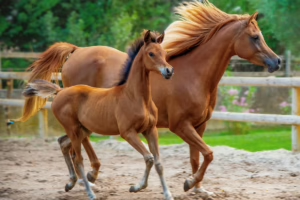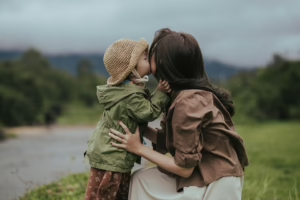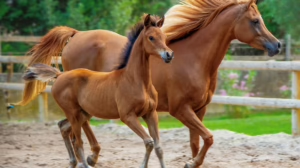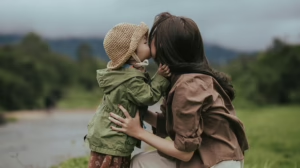Prejudice 101: Recognizing and Addressing Our Unconscious Biases
Introduction
Prejudice remains a pervasive issue in societies worldwide, manifesting subtly and overtly in various aspects of life. Understanding prejudice is crucial to fostering inclusivity, enhancing interpersonal relationships, and building a more equitable society. In this article, we delve into the concept of prejudice, focusing specifically on unconscious biases—those ingrained attitudes or stereotypes that unconsciously affect our understanding, actions, and decisions. Through recognizing these biases, we can take meaningful steps toward addressing and minimizing their impact.
Understanding Prejudice
Prejudice can be defined as an unjustified or incorrect attitude (usually negative) towards an individual based solely on their membership in a social group. This phenomenon encompasses a range of discriminatory beliefs and actions, leading to systemic inequality. While overt prejudice is easy to identify, it is often the more subtle, unconscious forms of bias that pose significant challenges.
The Nature of Unconscious Bias
Unconscious biases are automatic thoughts and feelings that often occur without conscious awareness. These biases stem from a complex interplay of personal experiences, societal norms, cultural influences, and cognitive shortcuts that our brains employ to process vast amounts of information quickly. They are often formed through socialization, media representations, and everyday interactions, leading to distorted perceptions and assumptions about various groups.
The Science Behind Unconscious Bias
Cognitive Frameworks
Human cognition operates on the premise of heuristics—mental shortcuts that enable us to make decisions quickly. While these shortcuts can be efficient, they can also lead to erroneous conclusions. For instance, when we categorize people based on racial or gender stereotypes, we rely on learned frames of reference that may not accurately reflect reality.
Social Identity Theory
Developed by Henri Tajfel and John Turner, Social Identity Theory posits that a person’s self-concept derives from perceived membership in social groups. This identification can lead to favoritism towards one’s in-group and prejudice against out-groups, exacerbating societal divisions.
Implicit Association Test
The Implicit Association Test (IAT), developed by psychologists Anthony Greenwald, Debbie McGhee, and Jordan Schwartz, measures the strength of automatic associations between concepts (e.g., associations between race and positive or negative attributes). Research utilizing the IAT has demonstrated widespread implicit biases across various demographics and cultures.
Types of Unconscious Biases
-
Affinity Bias: The tendency to favor individuals who are similar to ourselves, whether in terms of ethnicity, gender, upbringing, or shared interests.
-
Confirmation Bias: The inclination to search for, interpret, and remember information that confirms pre-existing beliefs, while disregarding evidence to the contrary.
-
Attribution Bias: Distortions in understanding the causes of behavior—often attributing the successes of in-group members to internal factors, while attributing failures to external circumstances.
-
Halo Effect: The tendency to allow our overall impression of a person to influence our perceptions of their specific traits. For instance, someone perceived as attractive may also be assumed to be more competent.
-
Stereotype Threat: The risk of confirming negative stereotypes about one’s social group, which can negatively impact performance and self-worth.
Recognizing Our Own Biases
Self-Reflection
The first step towards addressing unconscious bias is recognizing its presence within ourselves. Engaging in self-reflection with questions like:
- What assumptions do I have about different social groups?
- How do my experiences shape my perceptions?
Diversifying Perspectives
Exposing ourselves to diverse perspectives through reading, networking, and engaging in conversations with individuals from different backgrounds can broaden our understanding and challenge our biases.
Mindfulness Practices
Mindfulness increases awareness of our thoughts and emotions, allowing us to recognize biased reactions in real-time. By pausing and reflecting before responding, we can mitigate the effects of bias.
Addressing Unconscious Bias in Various Settings
In the Workplace
-
Training Programs: Implementing workshops aimed at raising awareness of unconscious biases can help employees recognize and combat their biases.
-
Structured Recruitment Processes: Utilizing standardized interview questions and blind resume screenings can reduce the impact of bias during the hiring process.
-
Diverse Teams: Promoting diversity within teams can challenge stereotypes, foster innovation, and decrease biases through exposure to new ideas and perspectives.
In Education
-
Inclusive Curriculum: Developing curricula that represent diverse voices and experiences can counteract stereotypes and promote understanding among students.
-
Teacher Training: Educators must receive ongoing training regarding their own biases to cultivate a more inclusive classroom environment, ensuring every student feels valued.
-
Peer Mentoring: Establishing mentoring programs where students from different backgrounds can learn from and support each other can enhance mutual understanding.
In Personal Life
-
Engagement and Dialogue: Initiating conversations about prejudice and bias in personal circles can encourage awareness and understanding within our communities.
-
Challenging Assumptions: Actively questioning our preconceived notions about people and aiming to understand individuals on a personal level can help dismantle stereotypes.
-
Community Involvement: Participating in community events focused on diversity and inclusion can broaden our horizons and expose us to varying perspectives.
The Role of Media in Shaping Bias
Media representations significantly influence societal perceptions. Stereotypes often propagated through television, film, and online platforms can reinforce biases and affect how we view others. Advocating for more diverse and accurate portrayals in media can help combat these ingrained biases, fostering a fairer representation of different groups.
Supporting Positive Media Initiatives
-
Promoting Inclusive Narratives: Supporting films, shows, and books that tell diverse stories can help broaden representation, challenging pre-existing stereotypes.
-
Critical Consumption: Encouraging critical thinking about media consumption—questioning the narratives presented and recognizing potential biases—can foster greater awareness.
-
Advocating for Change: Engaging in discussions about representation and fairness in media can help push for change within the industry, encouraging diverse storytelling.
Conclusion
Prejudice, particularly in the form of unconscious bias, is a significant barrier to achieving equality and understanding in society. By recognizing and addressing our biases, we take essential steps toward building a more inclusive world. Through self-reflection, education, and proactive engagement, we can challenge these biases and foster a culture of acceptance and respect. Understanding the nuances of prejudice is not just a personal journey but a shared societal responsibility—one that requires commitment, empathy, and dedication to positive change.
References
- Greenwald, A. G., McGhee, D. E., & Schwartz, J. L. K. (1998). “Measuring Individual Differences in Implicit Cognition: The Implicit Association Test.” Journal of Personality and Social Psychology, 74(6), 1464-1480.
- Tajfel, H., & Turner, J. C. (1979). “An Integrative Theory of Intergroup Conflict.” In The Social Psychology of Intergroup Relations.
- Banaji, M. R., & Greenwald, A. G. (2013). Blindspot: The Hidden Biases of Good People. Delacorte Press.
- Dastagir, A. E. (2020). “Diversity training in workplaces helps to bridge the gap in American society.” USA Today.
- Tatum, B. D. (2017). Why Are All the Black Kids Sitting Together in the Cafeteria? Basic Books.
This article provides a foundational understanding of prejudice and unconscious bias along with some strategies for recognizing and mitigating their impacts in various areas of society. By engaging with these concepts, individuals can better navigate their biases, promoting a more inclusive community.

























Add Comment